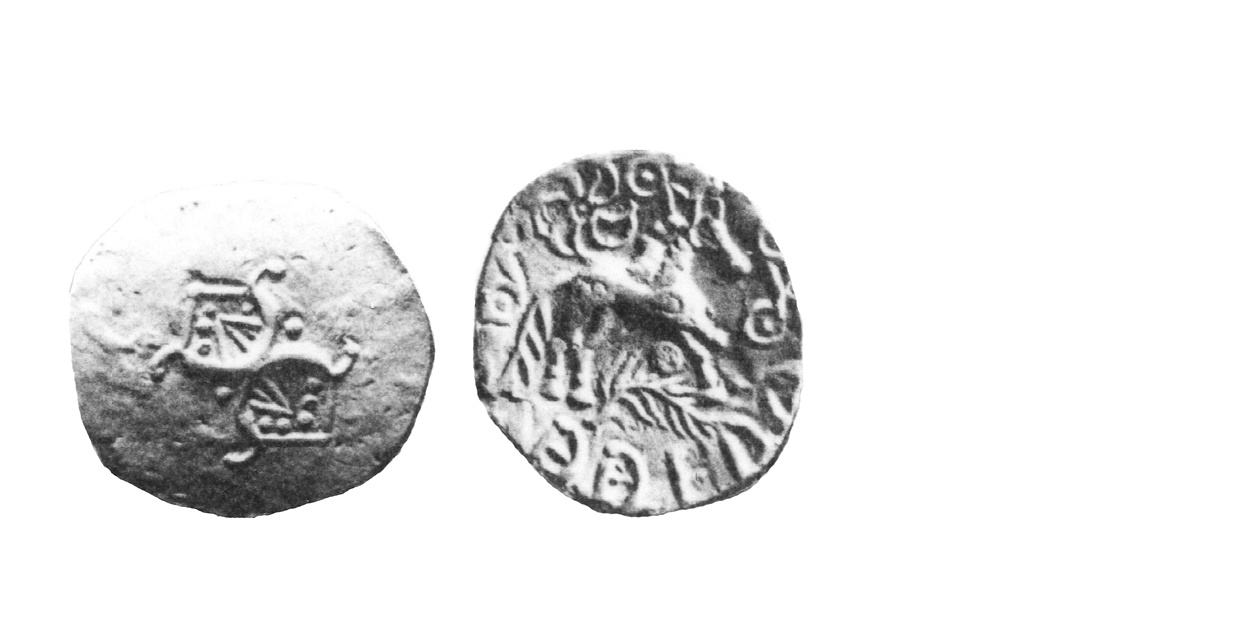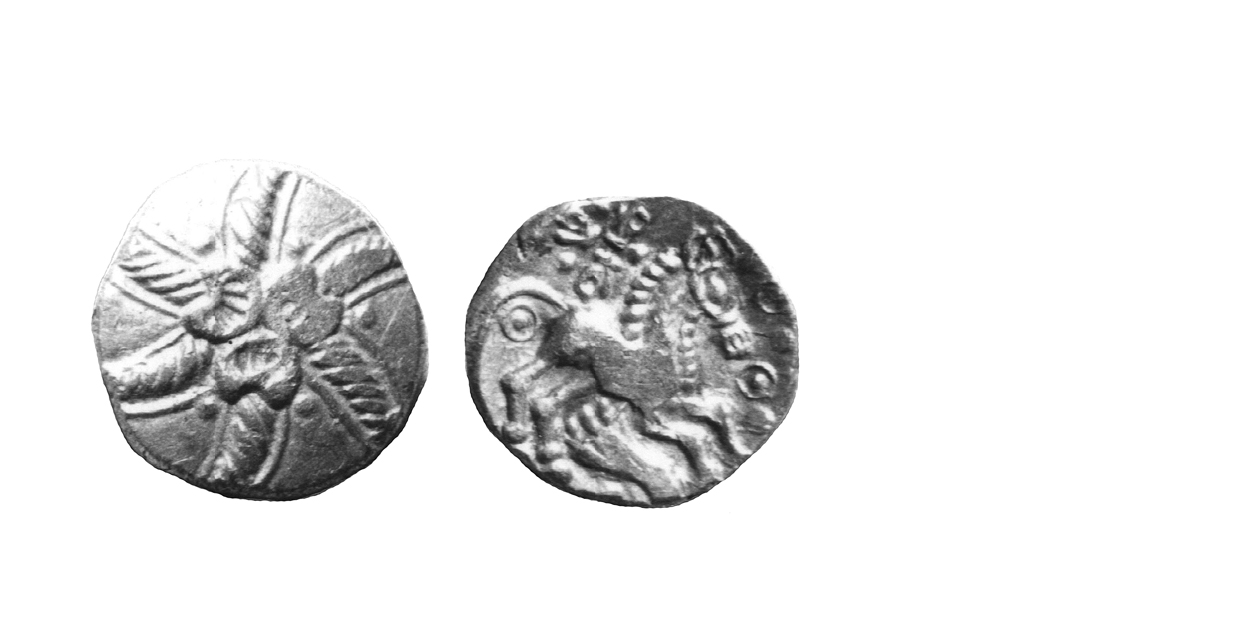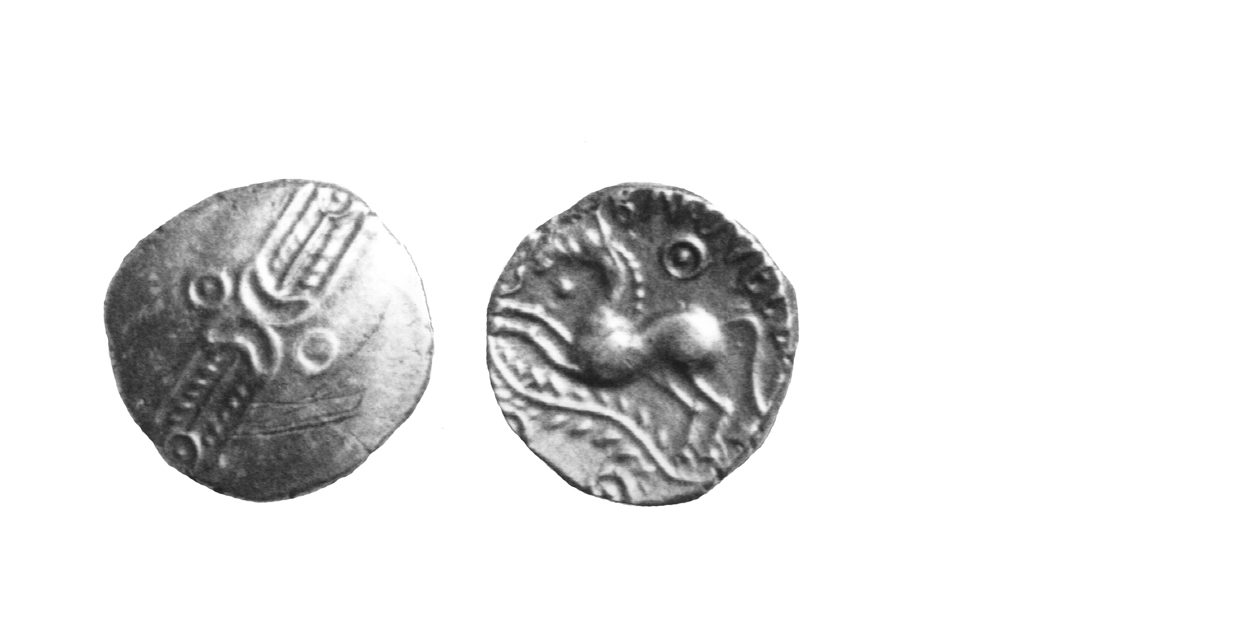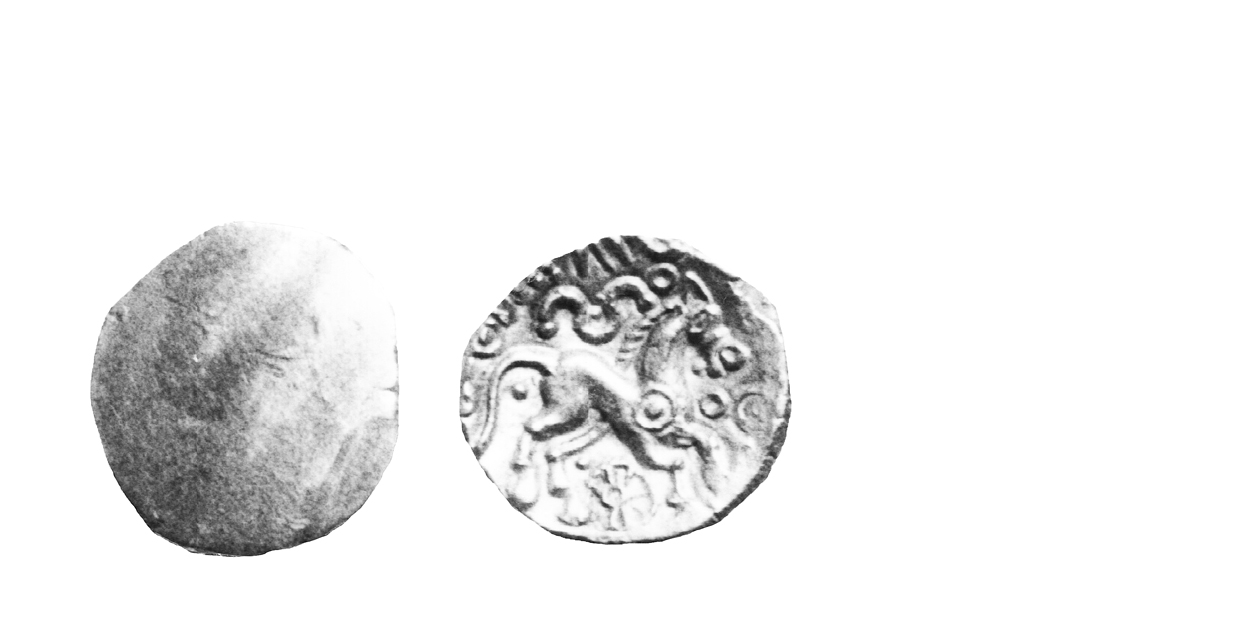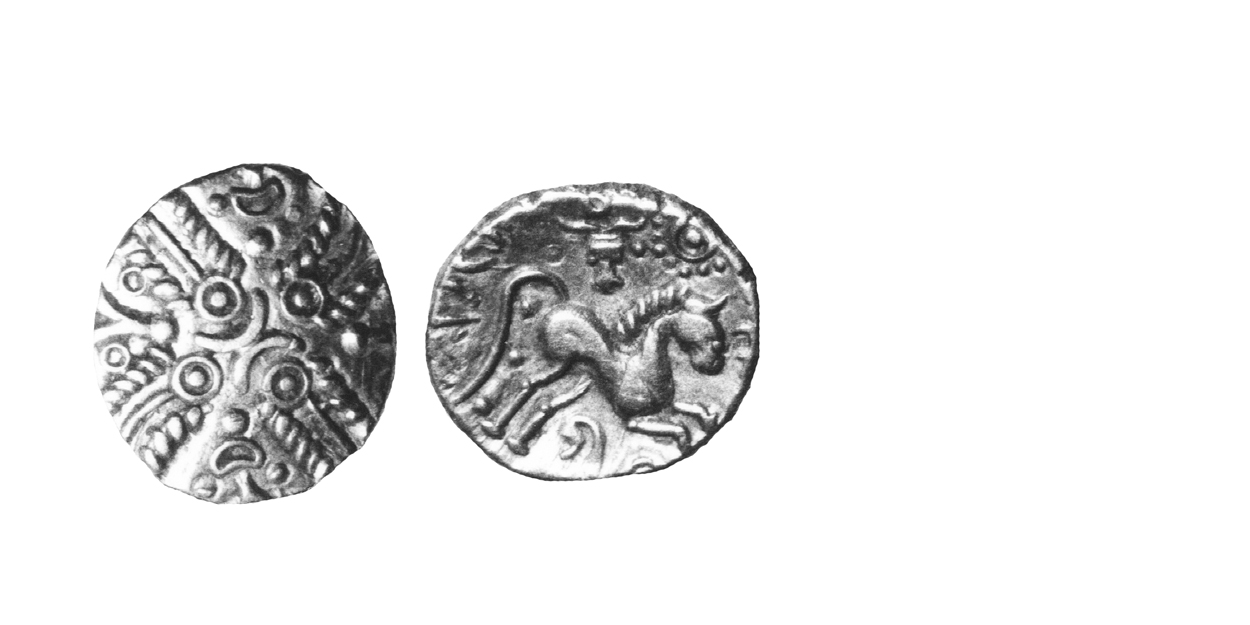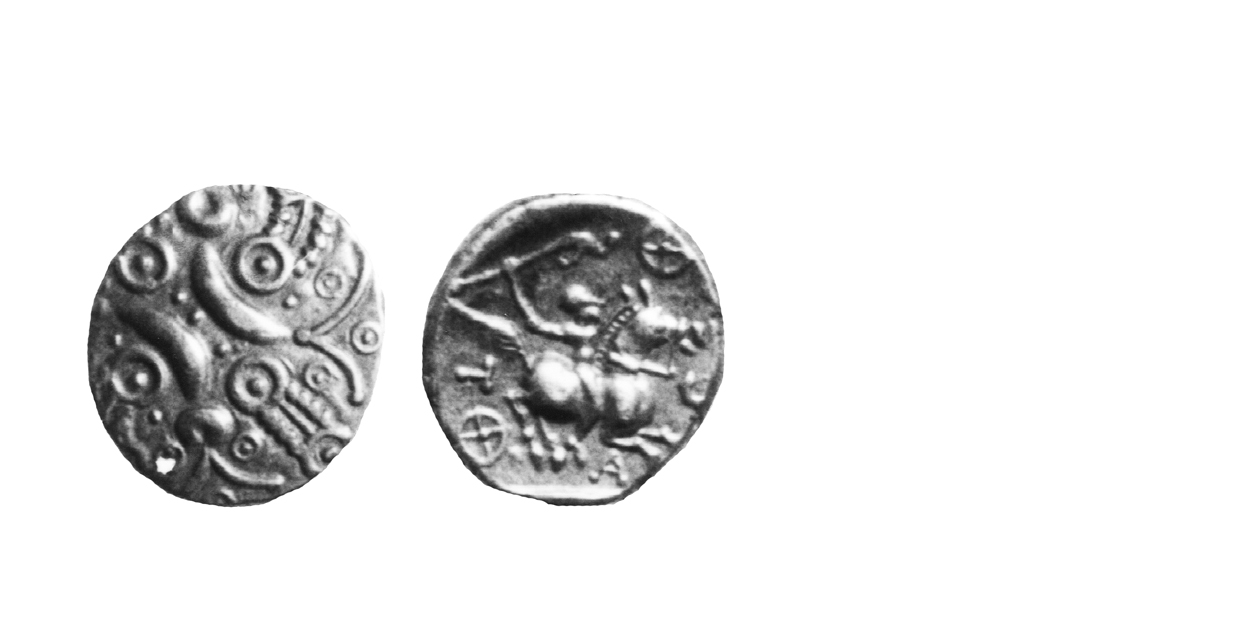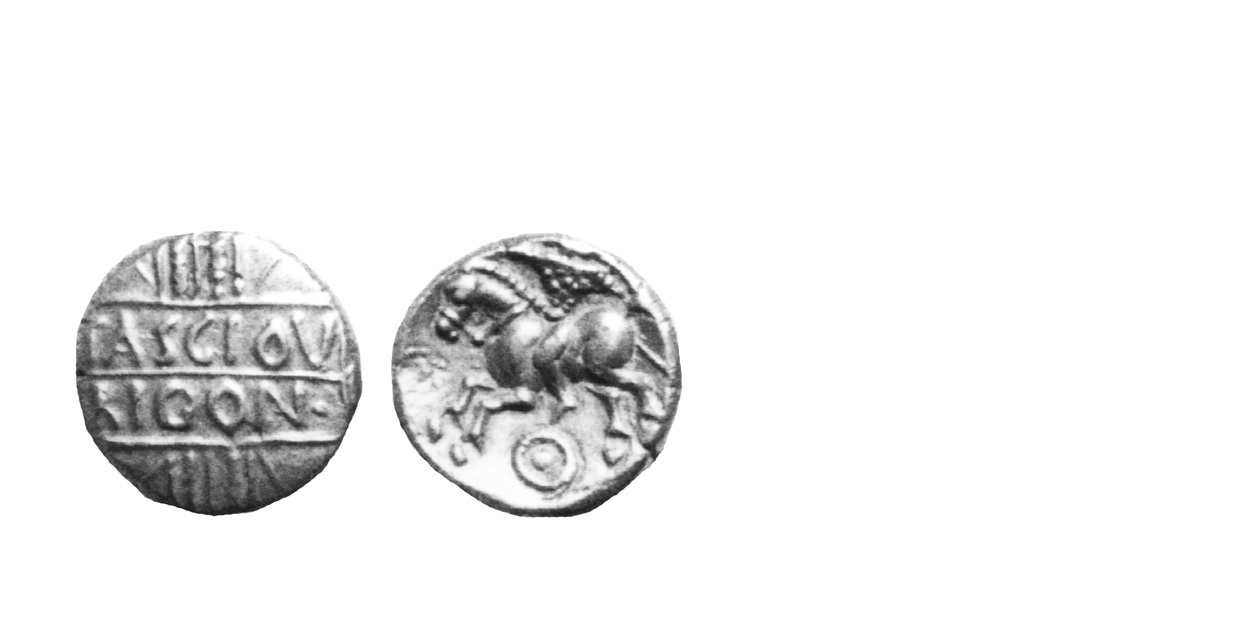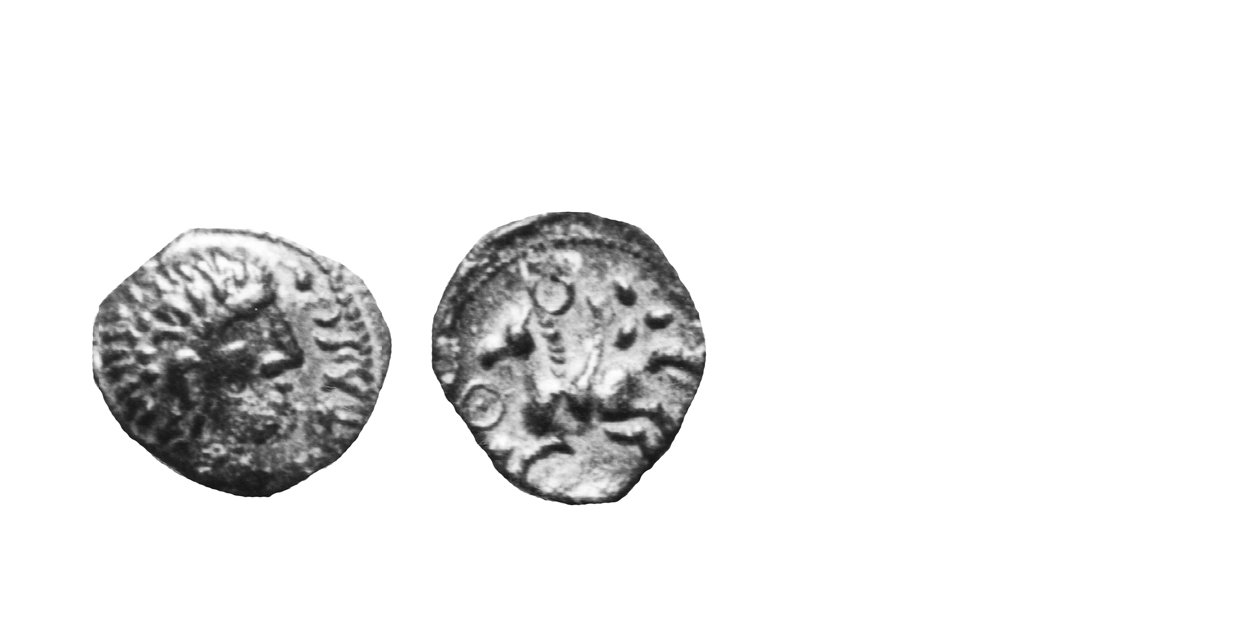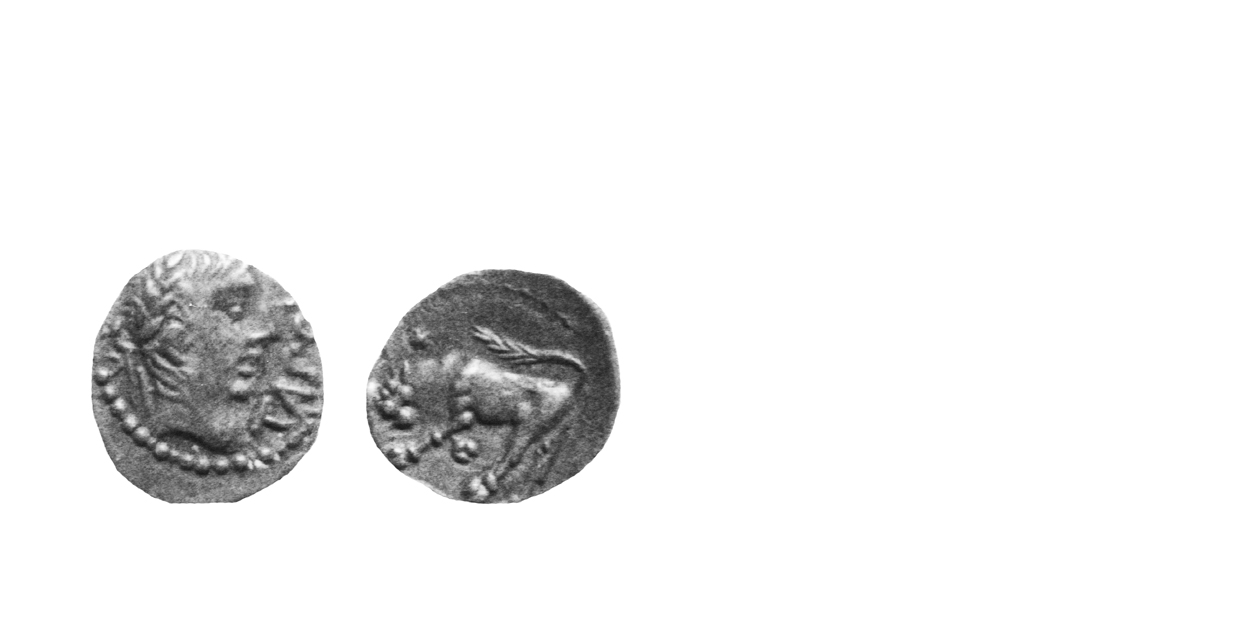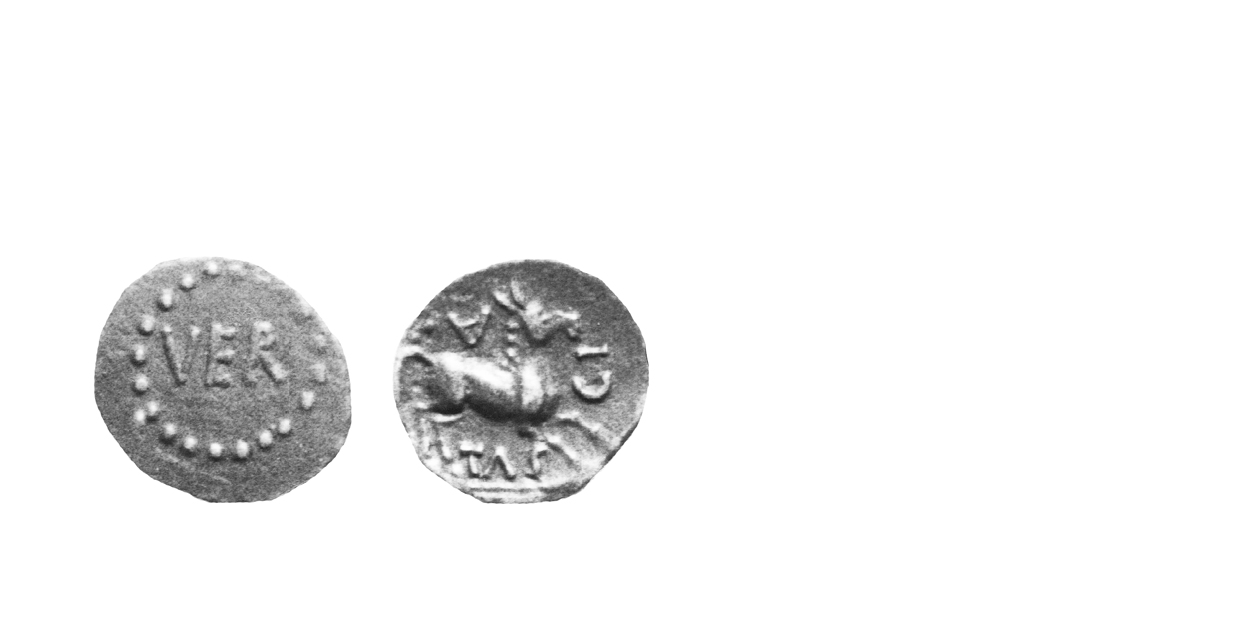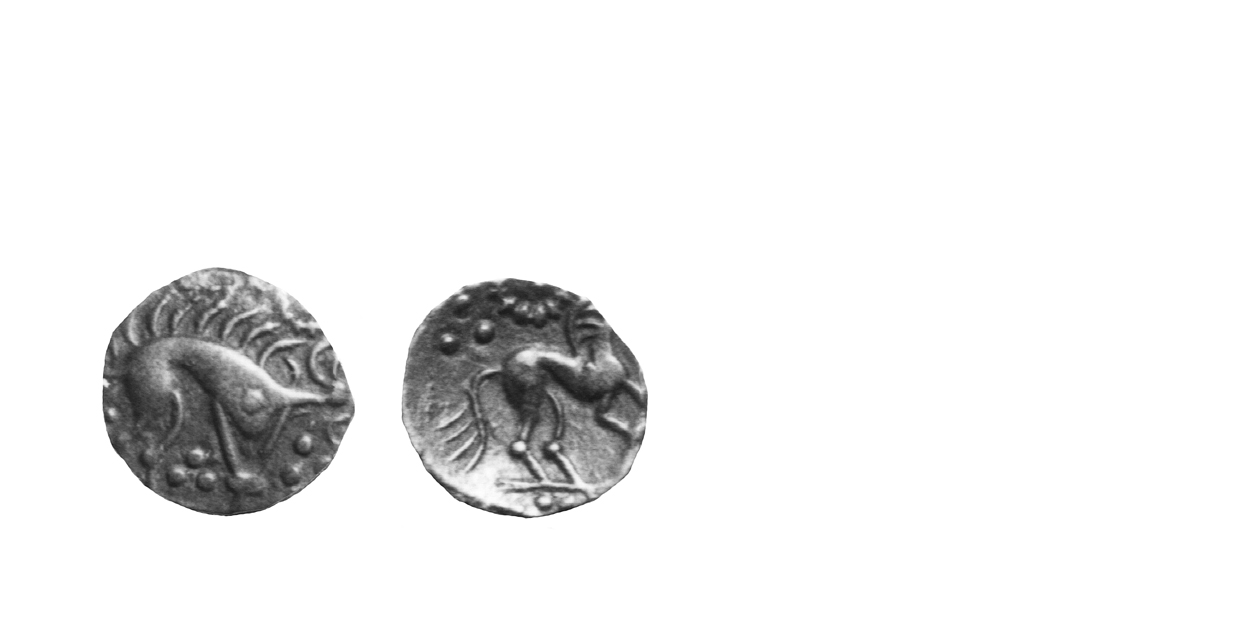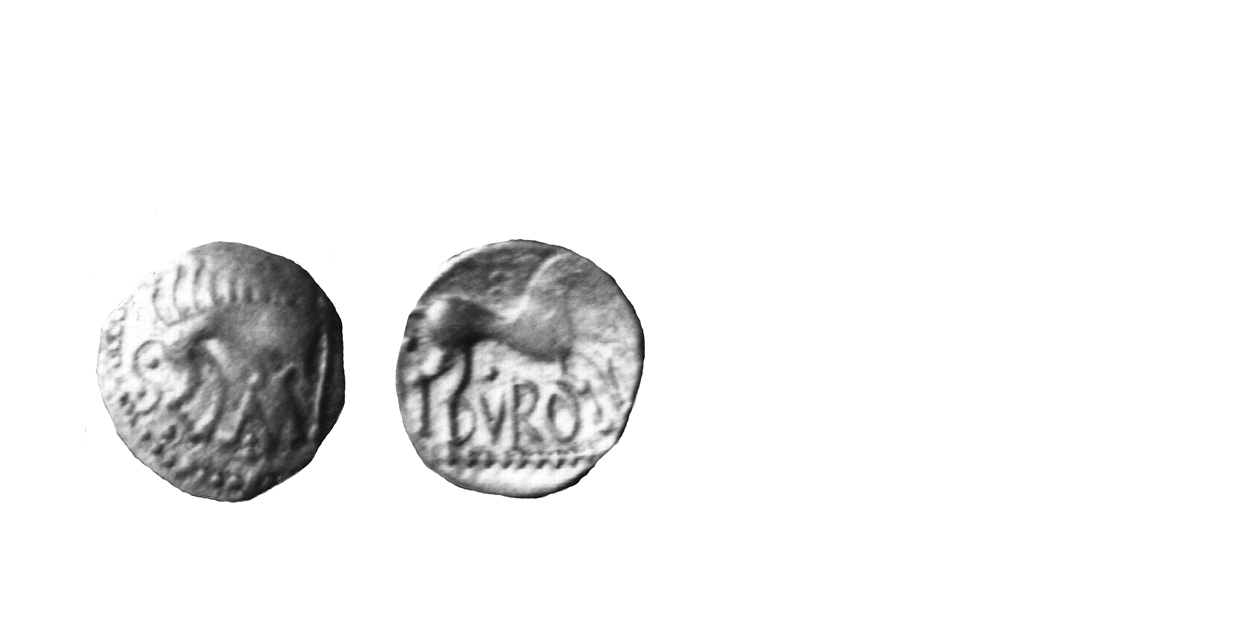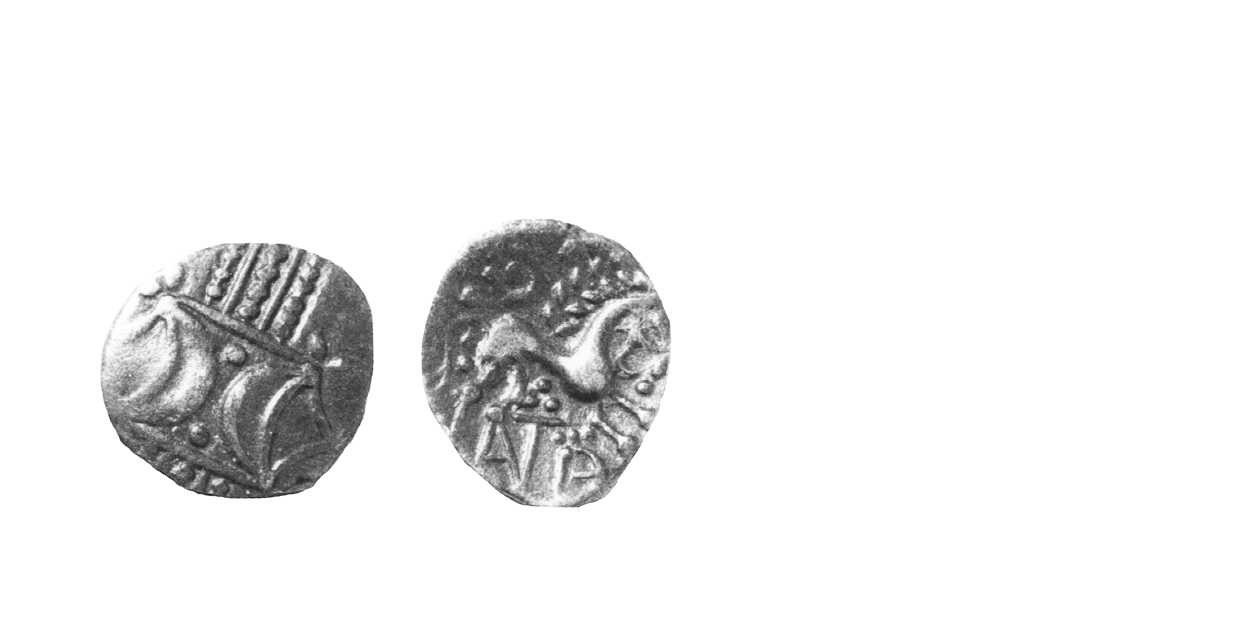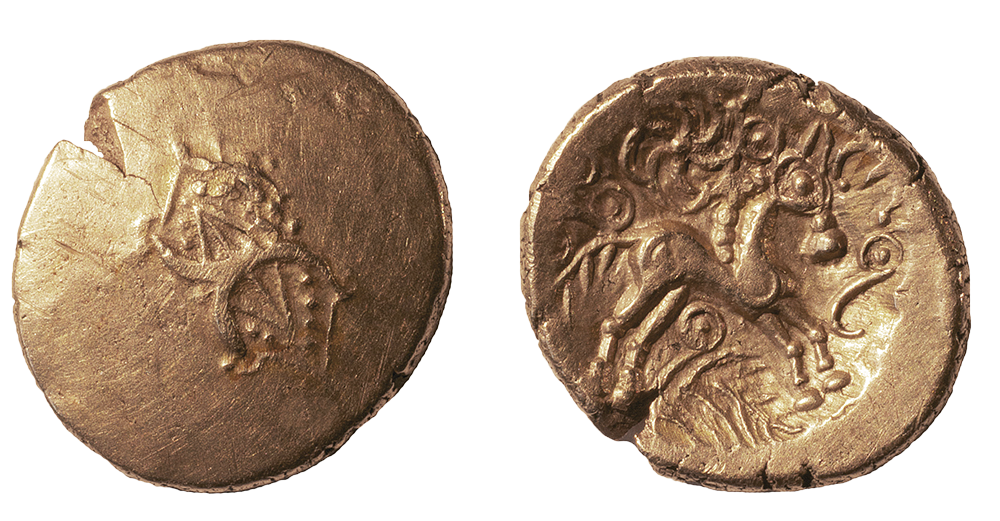
History
Early Dynastic Coinages (Info)
Coinage in the North Thames Region 30 B.C. – 20 A.D.
Trinovantes/Catuvellauni
The Trinovantes/Catuvellauni benefited from Roman favour throughout the second half of the First Century B.C., as their richly-furnished graves and elaborate and prolific coinage attest (65). Late types of wine amphorae appeared in their territory suggesting the Romans granted the tribe the profitable wine-trade rights. They probably received other trading rights with Roman-controlled Gaul as well. The wealth derived from cross-Channel trade enabled them to control the region north of the Thames to the degree they established an economic hegemony over the Iceni (66).
The reign of Addedomaros came to a close around 30 B.C., roughly ten years after he added his name to the staters. He struck three separate coinages, distinguished from one another by privy-marks. A short-lived ruler, Dubnovellaunus-in-Essex followed, with only a single coin issue. A Cantian ruler, Dubnovellaunus-in-Kent also appeared at this time, but the agreement of names is likely a coincidence.
The next ruler, Tasciovanus, led the tribe from about 25 to 10 B.C. and struck one of the most elaborate coinages in Celtic Britain. He struck three distinct issues, identified by the images on the gold staters. The First Coinage started with two stylized wreaths of Apollo crossed on the obverse and a Celtic horse on the reverse, but these images were soon replaced by more representational ones. First the Celticized horse was replaced by a mounted warrior brandishing a carnyx on the Second Coinage, and later the stylized wreath of Apollo was replaced with the inscription TASCIOV RIGON in a box. The title RIGON, meaning "great king", thus appeared for the first time on the British coinage. These innovations were fairly modest, as would be expected with a conservative coinage of high intrinsic value.
The silver and bronze coinages, however, were not subject to the conservatism expected of the gold staters. Thus freed of restrictions, Tasciovanus' moneyers introduced a great diversity of types: Celticized heads, mythological beasts, abstract designs and some of the earliest Roman scenes to appear on British coins. Several types had designs adapted from Roman denarii and at times the Roman images were simply copied. The head of Augustus appeared, for example, with Tasciovanus' name substituted for that of the Roman emperor. The appearance of Roman motifs at such an early date suggests close ties existed between the Trinovantes/Catuvellauni and the Romans. At a minimum, the tribe was assimilating Roman culture at a rapid pace.
The idea, suggested in the past, that Roman moneyers were sent to Britain to strike coins for the Celts need not be taken too seriously. The Celtic moneyers were perfectly capable of producing coins of the necessary artistic quality and had been demonstrating their die-cutting expertise for fifty years (67).
An important innovation which appeared on Tasciovanus' coins was the inclusion of mint names. The first mint to be so honoured was Verulamium, the modern St. Albans, indicated by VER on the coins. The inscription CAM also soon appeared, denoting Camulodunum, the modern-day Colchester.
Recently, there have been unconvincing attempts to separate the coinage into individual Catuvellaunian and Trinovantian issues, along the lines of Allen's 1944 paper (134).
Iceni
The Icenian coinage has been studied in detail by John Talbot (135).
The Iceni continued to be economically, if not politically, dominated by the Trinovantes/Catuvellauni. The post-Gallic War Icenian gold issue, the Freckenham Type, disappeared by 20 A.D. – the end of the uninscribed gold. Tasciovanus' coins circulated within Icenian territory, as had those of his predecessors Addedomaros and Dubnovellaunus-in-Essex.
During the middle of Tasciovanus' reign, a new series of uninscribed silver began, first by the Boar Type, reminiscent of the Corieltauvian Hosidius and South Ferriby Types. Sometime during this coinage, a few rare coins appeared with the inscription CANI DURO, the meaning of which is not known.
Surprisingly, the Iceni did not strike coins with the names of their rulers during much of this period. They were evidently reluctant to do so, and became the last tribe in Britain to produce an inscribed coinage. The Trinovantes/Catuvellauni may have exercised sufficient influence over the Icenian nobility to suppress a dynastic coinage.
The Boar Type was eventually replaced by a prolific issue of inscribed silver coins, the Emblem Types. The new image was decidedly not based on Corieltauvian motifs, suggesting increased Trinovantian/Catuvellaunian influence and diminished Corieltauvian.
Next Section – Early Dynastic Coinages – South Thames Region

